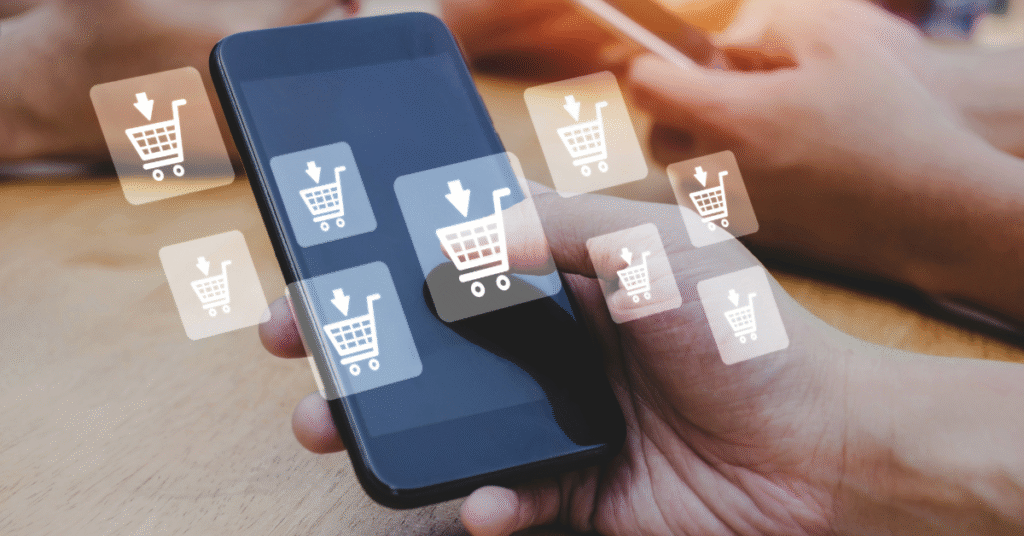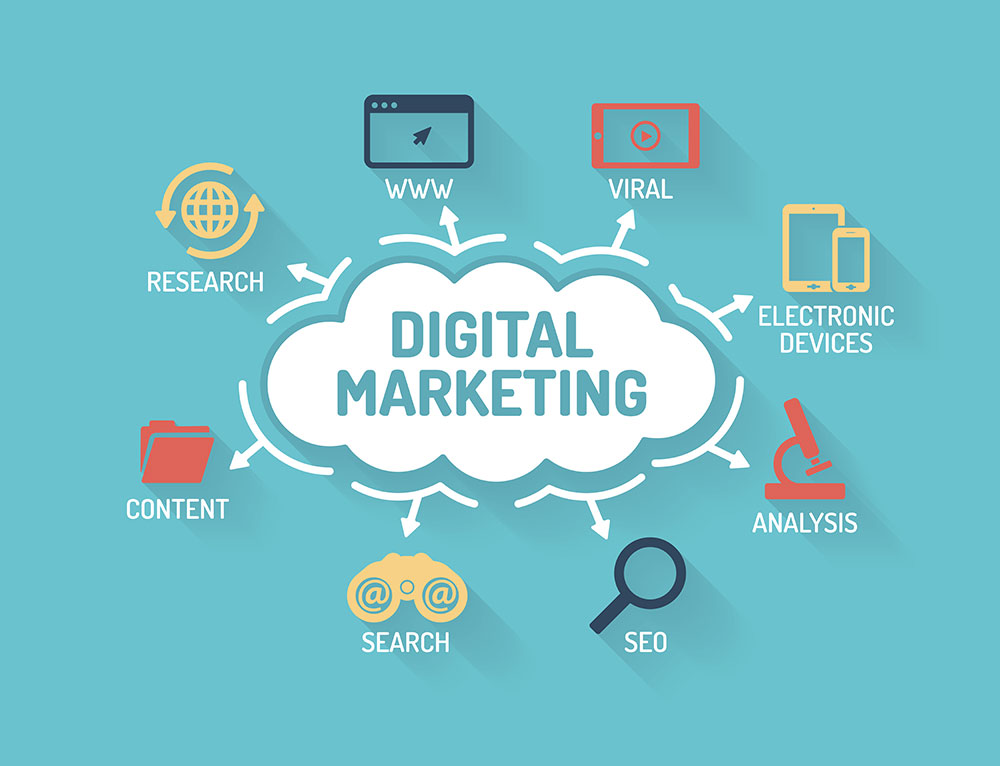In the ever-evolving digital era, the way people shop has undergone a massive transformation. The proliferation of smartphones and the internet has ushered in a new age of commerce—mobile commerce or m-commerce—which has revolutionized online shopping. Unlike traditional e-commerce, where purchases were primarily made on desktop computers, mobile commerce allows consumers to buy products and services anytime, anywhere, using mobile devices such as smartphones and tablets.
Mobile commerce is no longer just a supplementary channel but a dominant force shaping the future of retail. This article explores what mobile commerce is, how it works, and the profound ways it is changing online shopping. From convenience and speed to personalized experiences and innovative payment methods, mobile commerce is rewriting the rules for consumers and businesses alike.
Key Takeaways
- Mobile commerce enables shopping through mobile devices anytime, anywhere.
- It enhances convenience, personalization, and payment flexibility.
- Technologies like AI, 5G, and mobile wallets drive its growth.
- Mobile commerce is reshaping consumer behavior and retail strategies.
- Security and user experience remain critical challenges to address.
- Future trends include AR, voice commerce, and blockchain integration.
- Businesses must prioritize mobile optimization to succeed in the digital age.
What is Mobile Commerce?

Mobile commerce (m-commerce) refers to the buying and selling of goods and services through wireless handheld devices such as smartphones and tablets. It is a subset of e-commerce but specifically focuses on transactions done via mobile technology.
Mobile commerce refers to the buying and selling of goods and services through wireless handheld devices such as smartphones and tablets. It encompasses a wide range of activities, including browsing products, making purchases, and managing transactions, all conducted via mobile applications or mobile-optimized websites. Unlike traditional e-commerce, which primarily relies on desktop computers, mobile commerce leverages the portability and convenience of mobile devices to facilitate shopping anytime and anywhere.
Key Characteristics of Mobile Commerce:
- Access through mobile apps and mobile-optimized websites
- Use of mobile payment systems (e.g., digital wallets, NFC payments)
- Location-based services for personalized shopping
- Instant communication through push notifications and chatbots
Mobile commerce enables users to shop online without the constraints of physical locations or desktop computers, thus broadening accessibility and convenience.
History and Evolution of Mobile Commerce
The concept of mobile commerce dates back to the late 1990s when mobile phones first started incorporating internet capabilities. However, it was in the 2000s, with the introduction of smartphones like the iPhone and Android devices, that m-commerce truly began to flourish.
Timeline:
- 1997: Early mobile banking and SMS-based purchases
- 2007: Launch of the Apple iPhone, making mobile internet more accessible
- 2010s: Explosion of mobile apps and mobile payment systems
- 2020s: Widespread adoption of 5G and AI-driven personalization
The continuous improvements in mobile technology, faster internet speeds, and secure payment methods have propelled mobile commerce into a mainstream shopping channel.
Early Beginnings
The roots of mobile commerce can be traced back to the late 1990s when the first mobile phones with internet capabilities were introduced. However, it wasn’t until the advent of smartphones in the mid-2000s that mobile commerce began to gain significant traction. The launch of Apple’s App Store in 2008 and the subsequent proliferation of mobile applications provided consumers with easy access to shopping platforms, marking a pivotal moment in the evolution of mobile commerce.
The Rise of Mobile Shopping
As smartphones became more advanced, mobile shopping experienced exponential growth. Retailers recognized the potential of mobile platforms and began developing dedicated mobile applications to enhance the shopping experience. Features such as push notifications, personalized recommendations, and streamlined checkout processes were integrated into these apps, leading to increased user engagement and higher conversion rates.
Integration of Emerging Technologies
In recent years, mobile commerce has been further transformed by the integration of emerging technologies. Augmented reality (AR) allows consumers to visualize products in their real-world environment before making a purchase, enhancing decision-making and reducing return rates. Voice commerce, powered by virtual assistants like Amazon’s Alexa and Google Assistant, enables hands-free shopping experiences, catering to the growing demand for convenience. Additionally, advancements in mobile payment solutions, such as digital wallets and biometric authentication, have improved transaction security and user confidence.
Technologies Driving Mobile Commerce

Several technologies underpin the growth and efficiency of mobile commerce:
Smartphones and Tablets
High-performance mobile devices with touchscreens make browsing and purchasing seamless.
Mobile Applications
Apps offer smooth user interfaces, faster loading times, and exclusive features like augmented reality (AR).
Mobile Payment Systems
Digital wallets like Apple Pay, Google Pay, Samsung Pay, and other NFC-enabled payments simplify and secure transactions.
5G Connectivity
Faster network speeds reduce load times and support rich media content, enhancing the shopping experience.
Location-Based Services
GPS and beacon technologies provide personalized offers based on user location.
Artificial Intelligence & Machine Learning
AI powers personalized recommendations, chatbots, and voice assistants, improving engagement and sales.
How Mobile Commerce is Changing Online Shopping
Mobile commerce has redefined the entire customer journey from discovery to purchase and post-sale services. Here are some transformative impacts:
Enhanced Convenience and Accessibility
Mobile commerce offers unparalleled convenience by allowing consumers to shop on-the-go. Whether commuting, waiting in line, or relaxing at home, users can browse products, compare prices, and make purchases at their convenience. This accessibility has led to an increase in impulse buying and spontaneous purchases, as consumers can act on their desires immediately.
Personalized Shopping Experiences
Retailers leverage data analytics and artificial intelligence to deliver personalized shopping experiences on mobile platforms. By analyzing user behavior, preferences, and purchase history, businesses can offer tailored product recommendations, targeted promotions, and customized content. This personalization not only enhances user satisfaction but also increases conversion rates and customer loyalty.
Seamless Integration of Social Media and Shopping
Social commerce has emerged as a significant trend, integrating social media platforms with e-commerce functionalities. Platforms like Instagram, Facebook, and TikTok allow users to discover products, read reviews, and make purchases without leaving the app. This seamless integration has blurred the lines between social interaction and shopping, creating a more engaging and interactive shopping experience.
Adoption of Mobile Payment Solutions
The proliferation of mobile payment solutions has facilitated secure and convenient transactions. Digital wallets such as Apple Pay, Google Pay, and Samsung Pay enable users to make purchases with a single tap, eliminating the need to enter payment details repeatedly. Additionally, the rise of biometric authentication, such as fingerprint and facial recognition, has enhanced security and streamlined the checkout process.
Implementation of Augmented Reality

Augmented reality (AR) has revolutionized the way consumers interact with products online. AR allows users to visualize products in their real-world environment before making a purchase, enhancing decision-making and reducing return rates. Retailers in industries such as furniture, fashion, and beauty have adopted AR to provide immersive shopping experiences that bridge the gap between online and offline shopping.marketingtrendsonline.com
Emergence of Voice Commerce
Voice commerce, facilitated by virtual assistants like Amazon’s Alexa and Google Assistant, enables consumers to make purchases using voice commands. This hands-free shopping experience caters to the growing demand for convenience and accessibility, allowing users to shop while performing other tasks. Voice commerce is particularly appealing to busy individuals and those with disabilities, as it provides an alternative method of interaction.
Impact on Retail Strategies
The rise of mobile commerce has prompted retailers to adapt their strategies to meet the demands of mobile-savvy consumers. Businesses are investing in mobile-optimized websites, developing dedicated mobile applications, and implementing mobile-first marketing campaigns. Additionally, retailers are focusing on providing seamless omnichannel experiences, ensuring consistency across online and offline touchpoints.
Impact on Consumers
Mobile commerce offers consumers:
- Flexibility: Shop anywhere, anytime.
- Personalized Experiences: Customized shopping tailored to preferences.
- Speed: Quick and easy checkout processes.
- Better Engagement: Direct communication via apps and notifications.
- Security: Advanced encryption and biometric authentication.
These benefits lead to higher customer satisfaction and loyalty.
Impact on Businesses
For businesses, mobile commerce brings:
- Expanded Reach: Access to a global audience.
- Higher Conversion Rates: Mobile-friendly sites and apps convert better.
- Cost Efficiency: Lower overhead compared to physical stores.
- Data-Driven Insights: Analytics from mobile interactions improve strategies.
- Competitive Advantage: Early adopters capture mobile-first consumers.
Challenges in Mobile Commerce
| Challenge | Description | Impact |
|---|---|---|
| Security Concerns | Risk of data breaches and lack of trust in mobile payment systems. | Limits consumer adoption and trust. |
| Limited Screen Size | Small screens make navigation, product viewing, and checkout more difficult. | Leads to lower user satisfaction and sales. |
| Connectivity Issues | Reliance on stable internet or mobile data for smooth performance. | Can interrupt transactions and frustrate users. |
| App Fatigue | Users are overwhelmed by the number of retail apps. | Decreased app downloads and engagement. |
| Cross-Device Inconsistency | Experiences may differ across mobile, tablet, and desktop platforms. | Hurts brand consistency and user experience. |
| Mobile Payment Fragmentation | Numerous payment options (e.g., Apple Pay, Google Pay, PayPal) can be confusing or unsupported. | Causes abandoned carts and checkout delays. |
| Battery & Performance Constraints | Mobile devices may struggle with resource-heavy apps or websites. | Affects usability and leads to uninstalls. |
| Regulatory Compliance | Varying global regulations (e.g., GDPR, PCI DSS) complicate data handling. | Legal risks and added operational complexity. |
| User Privacy Concerns | Collection of user data for personalization may raise privacy issues. | May deter users from engaging fully. |
| High Competition | Many businesses are optimizing for mobile, making it harder to stand out. | Requires greater investment in UX and marketing. |
Despite its benefits, mobile commerce faces some challenges:
- Security Concerns: Protecting consumer data is critical.
- Device Fragmentation: Optimizing for many devices and screen sizes.
- User Experience: Balancing rich content with fast loading times.
- Payment Issues: Ensuring seamless and reliable payment processes.
- Privacy Regulations: Compliance with GDPR and other laws.
Addressing these challenges is essential for sustained growth.
The Future of Mobile Commerce

Mobile commerce is expected to continue evolving with innovations such as:
- Augmented Reality (AR): Virtual try-ons and immersive shopping.
- Voice Commerce: Shopping via voice assistants like Alexa and Siri.
- Blockchain: Secure, transparent transactions.
- AI Enhancements: Even smarter personalization and customer service.
- 5G Expansion: Ultra-fast connectivity enabling richer experiences.
Also Read : The Ultimate Guide To E Commerce Analytics For Online Retailers
Conclusion
Mobile commerce has become a cornerstone of modern retail, reshaping how consumers discover, evaluate, and purchase products online. Its emphasis on convenience, personalization, and seamless payment experiences has made it a preferred shopping method for millions worldwide. As technology continues to advance, mobile commerce is poised to integrate even more innovative features, from augmented reality to voice-enabled shopping, making the future of online shopping more immersive and user-friendly.
For businesses, embracing mobile commerce is not just an option but a necessity to stay competitive in a mobile-first world. Those who leverage its capabilities effectively can unlock tremendous growth and foster deeper connections with their customers.
FAQs
What is the difference between e-commerce and mobile commerce?
Answer: E-commerce includes all online transactions, while mobile commerce specifically refers to buying and selling through mobile devices.
Are mobile payments safe?
Answer: Yes, mobile payments use encryption, tokenization, and biometric authentication to ensure secure transactions.
How can businesses optimize their sites for mobile commerce?
Answer: By adopting responsive design, simplifying navigation, speeding up load times, and integrating mobile payment options.
What role does social media play in mobile commerce?
Answer: Social media platforms enable direct shopping through posts, stories, and ads, creating social commerce opportunities.
How does 5G improve mobile commerce?
Answer: 5G provides faster internet speeds and lower latency, improving user experience and enabling richer content.
Can small businesses benefit from mobile commerce?
Answer: Absolutely, mobile commerce offers small businesses access to wider markets with lower operational costs.
What are common challenges in mobile commerce?
Answer: Challenges include ensuring security, maintaining user experience across devices, and complying with privacy regulations.



